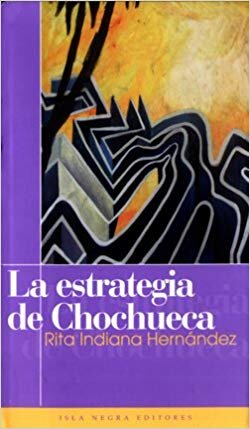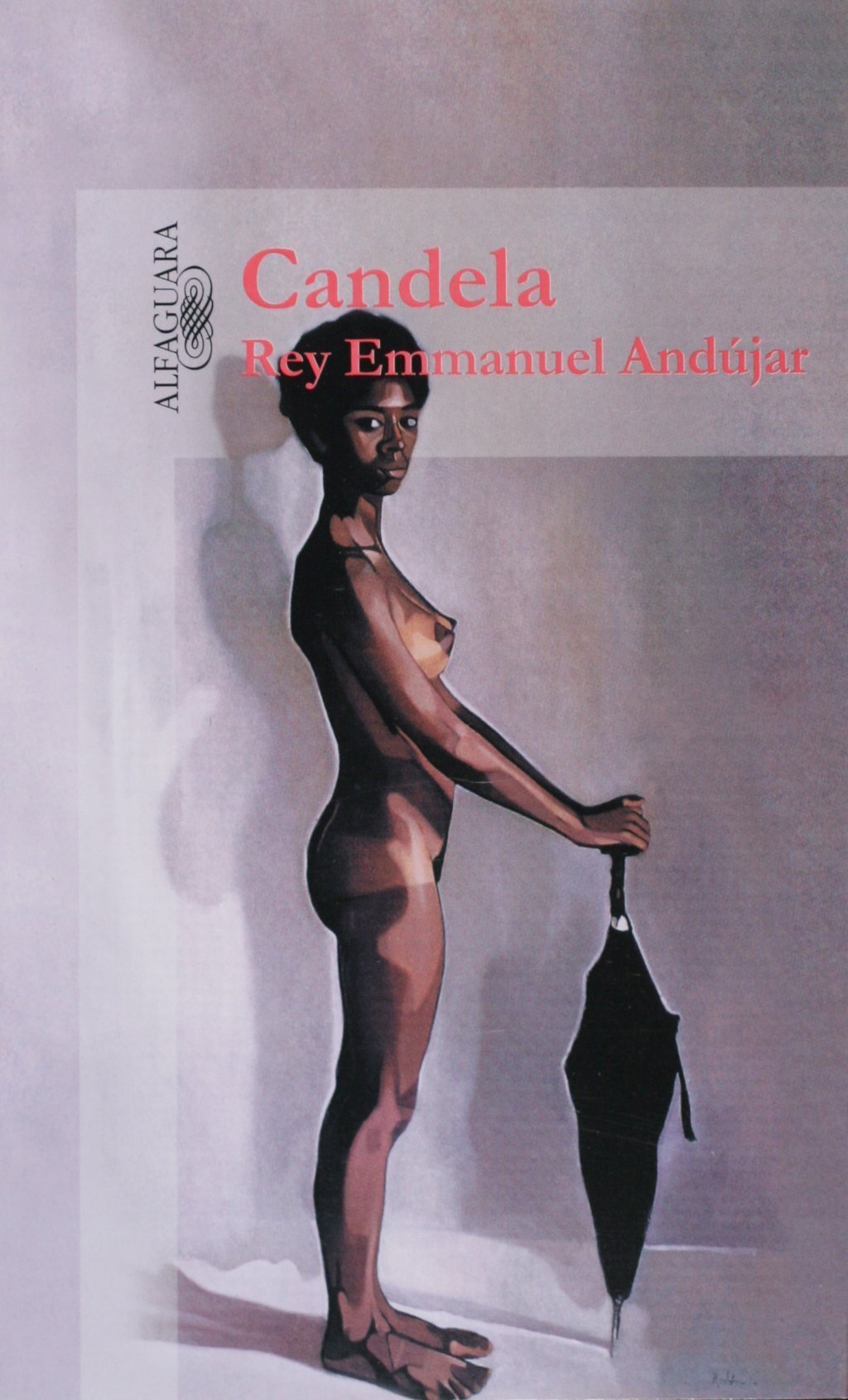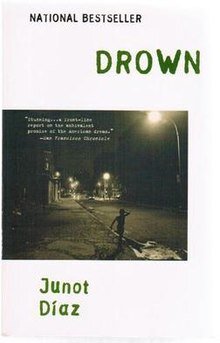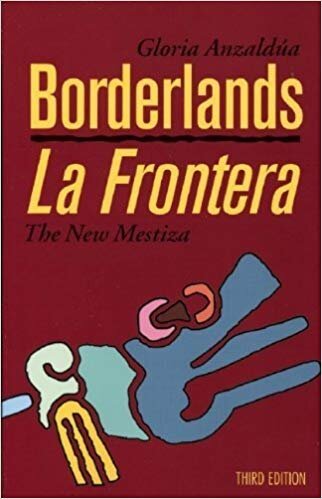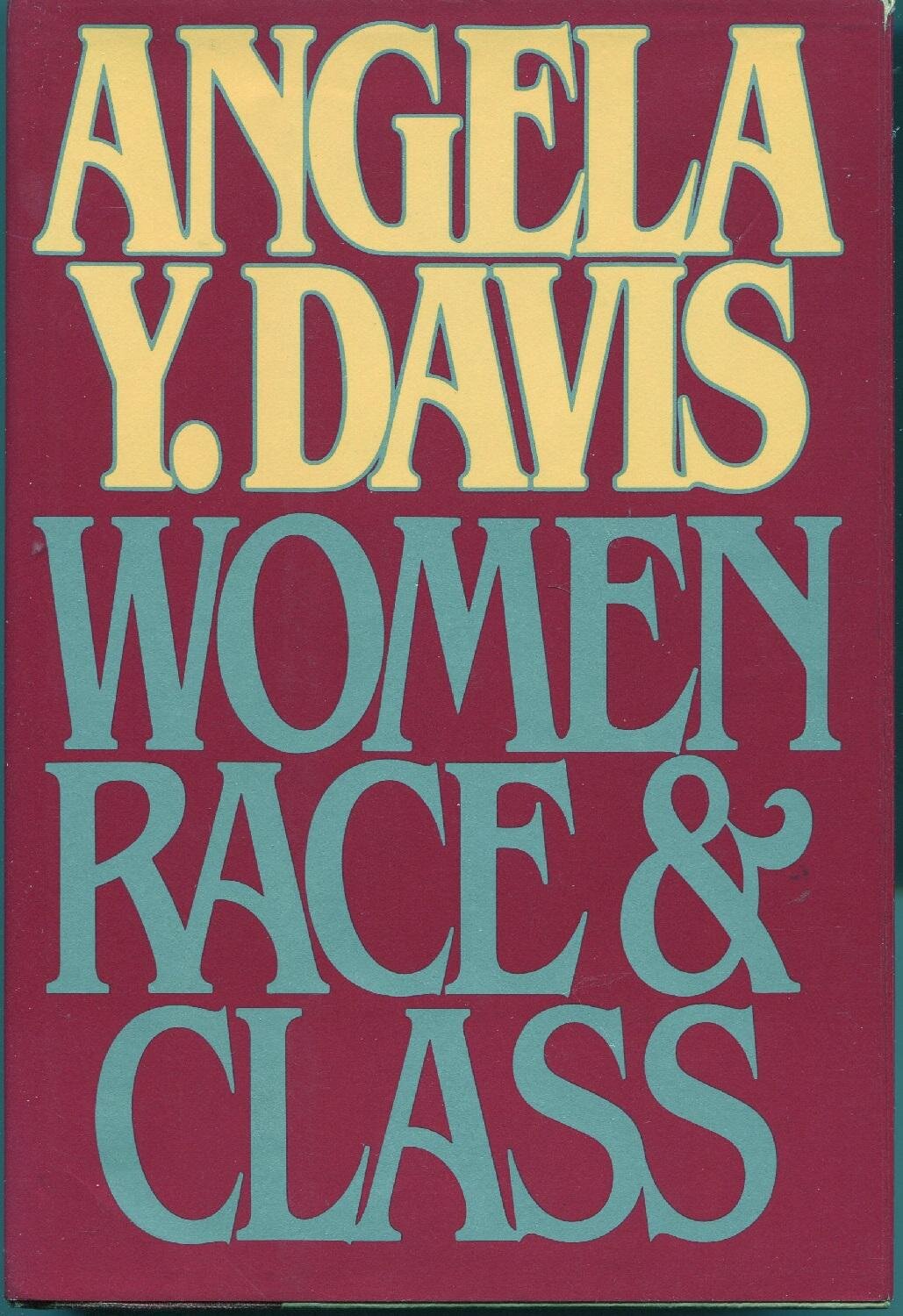By Nelson Santana and Amaury Rodríguez
January 22, 2020
Dr. Lorgia García Peña is associate professor of Latinx Studies at Harvard University and the author of The Borders of Dominicanidad: Race, Nations and Archives of Contradictions (Duke, Fall 2016). Lorgia García Peña’s book delves deep into Dominican society and history by dissecting foundational myths and state-sponsored propaganda. Lorgia García Peña also looks at Dominican alternative cultural production and the socio-political resistance found in performance art and Afro-Dominican popular religions. In the most recent roundtable installment from the Ethnic Studies Rise initiative that celebrates the work and legacy of García Peña's scholarship, translator and scholar Kaiama Glover argued that [Lorgia García Peña] “works at the borders of race and geography, and dares to look hard at the microaggressions—often learned on the lap or at the feet of colonial powers—that fracture relations among those who should be kin.” García Peña has multiple projects in the works including two books and a transnational digital archive project. Lorgia García Peña is also one of the founders of the Freedom University. ESENDOM interviewed Lorgia García Peña to discuss the genesis of her book, the relevancy of Ethnic Studies as well as the challenges ahead for Latinx and Dominican studies.
Where are the “borders of Dominicanidad”?
The borders of Dominicanidad are many and are located in many sites. They are within the geographical spaces that divide the island between two nations (La Línea Fronteriza) and in the Caribbean Sea/Atlantic Ocean that delineates the contours of that island-land space separating it from other nations. But they are also, and perhaps more importantly, in the bodies and minds of people. They are carried quite physically across spaces and shape how we experience our relationship to the island as a both a location of identity and a nation-state.
What role does bilingualism or multilingualism play in your work?
I am bilingual and I function quite literally between, within and across language. The way I experience the world is through a process of translation that at times has to do with the semantics of language and, at other times, with the cultural, political and social translation of meanings. As the youngest sibling in a family of four and as someone who was brought to the U.S. at the age of twelve, I have always been somewhat in between, as a bridge and translator between aquí and allá. That experience, and responsibility, within my family also shaped my academic path and the way in which I inhabit Latinx Studies, American Studies and Dominican Studies, in this beautiful Nié that I find so productive. So language, or languages- in terms of the multiple ways in which I communicate and understand the world- are intrinsic to my life praxis and work. Like feminist Latina scholar Gloria Anzaldúa said, “language is home.”
In your book, you caution against labeling the 1937 genocide as the Haitian genocide since the victims of that heinous crime included people from both sides of the island of Hispaniola including Dominico-Haitians and rayanos. ¿Can you elaborate more on this?
The way in which the category of “the immigrant” is being deployed in our current political climate-from the D.R. to the U.S. to Europe- is very dangerous. “Immigrant” has become another category of human exclusion, a racialized site of citizenship divestment. In many ways, we have dehumanized ‘immigrant’ and justified putting them in cages, deporting them, placing them in prisons, and concentration camps and allowing them to perish at sea, as we have seen very recently in the Mediterranean. I am very cognizant of how lack of citizenship leads to unbelonging and lack of belonging leads to dehumanization. We need to all work together to stop this violence. Now, I ask what function does the act of naming the massacre as “Haitian” serve in the process of historicizing and understanding this violence. It is simple: It distances it. It makes it a us vs. them situation. It justifies it. We know from the valuable research of scholars like Richard Turits, that the people who were attacked in 1937 were not “immigrants.” That is, we know that the violence was not aimed at sugar cane workers, temporary workers, and border crossers. Rather the violence was aimed at destroying a multi-ethnic population of people that in the strictest sense of the 1937 Dominican citizenship law would have been considered “Dominican” because they were born on Dominican soil or people who might have been born across in a location in which “across” was part of a cultural vaivén that was at the heart of a community. The 1937 massacre is the most violent episode in modern Dominican history. And it is violent not only because of the bloodbath and destruction of human lives but because of its lasting effects in the construction of a category of human exclusion based on the dichotomy of immigrant/citizen that is still sustaining anti-Haitianism in the D.R. and anti-Mexicanism in the U.S. and anti-blackness in Italy, I could, sadly, go on and on. There is a lot of important work around the massacre and I am sure we will see more in the future, but I think it is also critical to insist on the effects that naming it “Haitian” has on the continued separation of Haitian/Dominican and on the continued exclusion of ethnic Haitians from the nation. Citizenship affords important rights and protections to people and while we know that citizenship is never equal, that race, class, gender, body ability and sexual identity all play a role on how the state serves or not its citizens, until we find a better way, until we re-organize the world differently and abolish nations, and borders and national narratives, we can at least insist on pointing to the violent and hypocritical ways in which the nation—in this case, the Dominican nation—excludes, violates and murder its own citizens.
Can you name some Dominican and non-Dominican artists and writers that have marked you as a scholar?
I will always start here with Josefina Báez, whose work I encountered back when I was only 15 years old and a first year college student at Rutgers University. Josefina had come to Rutgers to present a performance along with the wonderful actor and director Claudio Mir. I went to see it and it changed my life. I had never seen a “show” that depicted what I saw as my own narrative, my mundane childhood experience as “art.” From that moment I followed her work and Claudio Mir’s very closely which in those days meant attending their rehearsals in people’s houses, going to small presentations in apartments and houses in the area and joining the tertulias de mujeres in the home of Dr. Daisy Cocco de Filippis in Queens on Sunday evenings. Josefina opened a wonderful world for me. Her work disarmed me in incredibly productive ways and has accompanied me for over two decades. She was my starting point into this path of learning. There is also, of course, the genius of Junot Díaz, the brilliance of Rita Indiana Hernández, the beauty of Rey Andújar, the wit of Aurora Arias, the magic of Nelly Rosario. In general, the post-80s Dominican and Dominican diasporic literature has been incredibly important to the development of my scholarship and teaching. And of course there is the incisive, ground-breaking, foundational work of Silvio Torres-Saillant, el profe, without whom none of us would be here. Period. Outside of Dominican studies, I have been truly guided by interdisciplinary anti-colonial work done by women of color feminists. The work of Gloria Anzaldúa, Cherrie Moraga, Chandra Talpade Mohanty, Angela Davis, bell hooks and Lisa Lowe has saved me and given me a home in academia.
“My aim is less about critiquing the limitations of texts than it is about showing the importance of creating new archives, archives that can help us better understand the silences and omissions of what we call History”
Performer and writer Josefina Báez. Photo: Giovanni Savino.
Photography and cartoons are powerful propaganda tools. In your book, you use images to counter the traditional historiography about Dominican Republic. Can you talk about the visual archive and the limitations of texts?
My aim is less about critiquing the limitations of texts than it is about showing the importance of creating new archives, archives that can help us better understand the silences and omissions of what we call History. Sometimes, a photograph can help us do that, but other times, it is a different form of text—it can be graffiti, or a letter in someone’s personal archive, a journal, a song. The invitation is to open possibilities and to expand what we consider “evidence” in our engagement of history in order to make room from alternative ways of understanding.
The field of Dominican studies has experienced considerable growth over the years. In your view, what kind of work will expand the scope of Dominican studies?
I think we need more work on queer lives, queer histories, queer counter-discourse. We need more intentional work on women, on feminist interventions in our histories. I think we also need to expand our diasporic scope to look at what is happening with Dominicans in places like Antigua where we are now ten percent of the population or Chile and Argentina where the immigrant rights movement is so entangled with anti-racist movements. I think we still need more work in the nineteenth century particularly in the post-restauración period. The possibilities for growth are many and the exciting thing is that we have many great young people doing amazing work with the support of my generation of scholars who value mentorship and who have the tools and the will to see our students grow and go out there to do great things. I am so incredibly hopeful and excited for the future of Dominican Studies. I said it ten years ago and I will say it again, Dominican Studies is hot!
You are among a group of innovative scholars—Marissa J. Fuentes (Dispossessed Lives Enslaved Women, Violence, and the Archive, 2016), for example—who are not only writing about the silences within the archives, but that are also paying attention to how the bodies of women, specifically women of color, serve as sites of memory and embodied historical archives. Can you talk about how Latinx, Caribbean and Dominican women have contributed to preserving histories from below?
From the way in which cofradías were organized in the seventeenth century where women were in charge of the memory, charged with remembering, to the informal ways in which it is our mothers, and aunts who keep the memories—quite literally in a box, or suitcase— women are charged with remembering. And as Margarita Cordero reminded me recently, our memory of events is both the memory that gets dismissed because it is regarded as less important because it is often based on the quotidian, yet it is precisely from the quotidian that we are able to truly understand processes. We have memoranda written by men about important things like war, and peace, and tariffs, and borders. But how we actually understand what these war, and peace and other important stuff meant to people is through how they experienced it in their daily lives. That memory is preserved by women, through their songs, through their narratives, through the stories they told and at times, through the violence they experienced. I am interested in that archive. I am interested in reading the important stuff in important papers only through the quotidian, through the memories of women that we dismissed for too long.
Cofradía de los Congos del Espíritu Santo de Villa Mella. Photo: Museo del Hombre Dominicano. Via UNESCO.
One standard narrative that you challenge is this notion that Dominicans are not black or that Dominicans do not know they are black. You explicitly state that Dominicans are black—rightfully so. Why have you made it a mission to forcefully make this statement?
I think that the earlier scholarship about Dominicans and the Dominican Republic produced in the United States was in many ways obsessed with Dominican racialization and what some scholars perceived as anti-blackness. To me that argument is narrow-minded and deletes the rich and important history of black resistance in the D.R. from the slave insurrection to the present. Most people do not know that it was in what is now the Dominican Republic where the first slaves revolted in 1532! Is there racism in the D.R? Yes. Sadly, there is racism in the D.R. and in Haiti and in the U.S. and everywhere. And that racism looks different than in the U.S. because race is a social construct therefore race and racism look different or manifest differently in each society, despite certain similarities. But if we are actually going to do transnational work on race, we need to start by paying attention to those differences, looking at the sites of discomfort and asking questions. We also need to not apply our own labels and ways of understanding race, and therefore dismiss how people understand their own racialization. We need to take seriously how people experience race, how they name themselves, and then think about what those labels mean in the socio-historical context in which they are being deployed. The steps need to be listen, listen some more, then go back and listen again. Telling people how they should live their blackness, particularly if we are scholars who do not experience blackness in this same way, should never happen.
To me, the first step toward an anti-colonial study of blackness and Dominicanidad, requires scholars to recognize that Dominicans are also descendants of slaves, that the state propaganda and the colonization of the D.R. by Spain and the U.S. has insisted on the erasure of blackness from the narrative. Further erasing Dominican blackness in our scholarship is a form of violence.
Can you discuss some of your challenges when conducting research and writing? At any point, did you have difficulty accessing physical archives?
If you ask anyone who has ever done any work in the Dominican National Archives (Archivo General de la Nación), you will hear similar answers about the challenges and difficulties of accessing materials, the “disappearances” of documents, the wait, the blackouts, the ridiculous sexist and discriminatory practices some of us experienced from “you cannot wear sandals” to waiting after all the white men in suits get their documents so you can be told to come back tomorrow, etc. I was blessed to do the gross of my research in the D.R. at a wonderful moment when historian and professor Quisqueya Lora was in charge of the documentation room and right after Roberto Cassá and Raymundo Gonzalez had begun to reorganize the collections to make them more accessible. However, I still faced challenges in accessing documents housed in private collections for as a Dominicana from the U.S. of a poor immigrant background with no connection to the Dominican intellectual world, I simply did not have access to certain archives. Yet, I made do with what I could access and I learned a lot from the experiences and generosity of many people who shared their knowledge with an openness I was unaccustomed to as a U.S.-based scholar.
In terms of writing and conducting research in general, the biggest challenge is the burden of being a woman of color teaching ethnic studies. Women of color in academia are bombarded with so much service, it is always a challenge to get our research done. Still we do and we keep doing it. But I think we really need to talk more about this issue as a national crisis in our colleges and universities with serious repercussions in and out of the classroom. I talk a lot to my graduate students about this issue, about the need to raise awareness about how the institutions place us in positions of hyper visibility and vulnerability that are simply unjust and unequal. That reality leads us to have less time for our research, less time for our families, less time for self-care and the implications are huge. Our women of color in academia are getting sick, dying young, we are an exhausted bunch. It is really a crisis.
“As a Dominicana from the U.S. of a poor immigrant background with no connection to the Dominican intellectual world, I simply did not have access to certain archives”
Among the many people or characters that you have researched or discussed in your work as a scholar, is there one figure that stands out the most? Is there someone who has impacted your work? (Asking the question a different way) Who is the one (or more than one if it is a difficult choice) figure(s) in your work that you believe readers must know?
Olivorio Mateo / Papá Liborio.
People have to get to know Olivorio Mateo, such an important symbol of anti-colonial resistance and Afro-religiosity in the Caribbean. His story, his life, the way in which people embraced him and what he symbolized at such a critical moment in Dominican history is just so poignant. This is a man that not only confronted the U.S. marines and the Dominican elite alike, he also gave people a space to think outside the dominant structures of the neocolonial state. What he was proposing was an alternative form of organization and survival that relied on community and faith, something that is grounded on Afro-religious epistemology as Jacqui Alexander reminds us. I know that one day I am going to write a book just about Papá Liborio. There is so much I have to say still, so much we can learn from him and from his followers about the power of Afro-religious resistance, particularly at the face of the growing conservative Christian structures that STILL dominate every institutional space in the Dominican Republic—from the state to the school. For me personally, however, Mateo has truly been a companion, he has been with me in the most significant of ways, throughout my process of writing and researching. I learned quite a bit about reading and about archives by just following Olivorio's life and death. It has been an honor to have him with me all these years.
Olivorio Mateo / Papá Liborio. Source: Archivo General de la Nación (AGN).
Borders of Dominicanidad is a work that challenges “standard narratives” as well as the vast body of the scholarship that has been published on the Dominican Republic. Is it possible to do justice to a work like Borders of Dominicanidad without being a scholar activist?
I guess the way I see it is I wrote the book and released it to the world. What people do with it is no longer in my hands. I do hope that people find it useful, that it accompanies people’s journeys but beyond that I cannot ask more except that others go out and do their own work and push boundaries and fill as many silences as they can in their own work be it artistic, academic, political.
In October 2010, the Georgia Board of Regents passed multiple policies, essentially banning undocumented students from the top five public universities in Georgia and also banning undocumented students from in-state tuition rates. As a result, you and a coalition of students, scholars, activists, and other allies formed Freedom University. Can you tell us about Freedom University? How can any interested parties participate and contribute? Also, how can other regions in the United States follow suit?
Freedom University is one of the biggest joys in my life, one of the best learning experiences of my life. It taught me so much about teaching, about solidarity and about the importance of building coalition. The most important lesson was of course, that you actually do not need much to create spaces for inclusion. We created Freedom U with no money, just lots of collective work. My advice, and this is something I tell my students all the time, is to re-shift the focus. We live in an incredibly difficult political moment. There is so much violence and it is very easy to feel overwhelmed particularly if we are focusing on the big picture (look who is in the White House, etc.). But there is always a lot we can do in the communities we inhabit and that can go from a building to a city. When we shift our focus, when we look at what is that I/we can do within the space we inhabit, the possibilities open up. At times the impact is very small, and that is ok. Other times the very small action we take has huge ramifications beyond what we imagined. That was the case of Freedom U. I would invite people to find ways to collectively build within the community they inhabit, to collectively contradict violence with love and solidarity. That does not mean you lose sight of the national and global problems but it means you can be effective in creating, even if it is in a very small scale, the changes you want to see. Imagine if we all did that?
What motivates you to be an activist?
My love for humanity. I love us. I think we are wonderful and capable of wonderful things. I also think we, each single one of us, no matter what age, are responsible for demanding justice when there is injustice. It is really very simple if we see ourselves as responsible not for the injustice but for seeking justice, then it is not really activism, it is living. My activism is my life-praxis.
What is your definition of ethnic studies? Why are ethnic studies important?
My own definition of ethnic studies is as a space for anti-colonial contestation of hegemonic ways of knowledge-making and knowledge production. Ethnic Studies—whether you name it that or something else— are vital to our education because they return a little bit of what has been taken away from us by hundreds of years of colonialism and coloniality. The way in which we have learned everything we know is biased, exclusionary, racist, sexist, and unjust. Ethnic Studies, Gender and Sexuality Studies and other fields provide another lens to see the world. That is incredibly valuable to our students and it is life-saving to many of us. The fact that universities continue to resist ethnic studies is the most clear sign that we desperately need it.
Students interested in studying the Dominican Republic are often discouraged from studying this nation at the PhD level and instead are steered toward Mexico, Brazil, Argentina, or Cuba, among other countries, as these are often considered to have a “richer” historiography or be of “greater significance” as an area of inquiry to study. How have you challenged this way of thinking? Why is the Dominican Republic an excellent place for inquiry? Why do Dominicanists and others have to defend their work to an extent that Americanists or Europeanists do not?
I remember when I was in graduate school and declared that I wanted to write a dissertation about the Dominican Republic, I was discouraged and proposed to do just what you described in your question. Then when I began to write my book, a senior colleague urged me to make it about the Caribbean, to expand it because “you really don’t want people to think of you as a Dominicanist. It is such a small country.” And again, this is why we need ethnic studies. The idea that we can only learn important things when we study big nations, or that we can only learn about social processes in Latin America from studying Argentina or Mexico responds to both a colonized and a hegemonic way of understanding Latin American Studies. The question should never be if this particular country is “big enough” but rather what are the larger questions you are asking and how can the Dominican experience help us understand that. My aim with my book is not just to study Dominicanidad but to propose new methods for asking questions about borders, nations, race and immigration. Those questions can then, hopefully, help people studying other sites and other countries. I happen to think the Dominican Republic is the center of the world. It is a place that can help us understand the most urgent questions about our current political moment precisely because it exists in a Nié between colonialism and coloniality. But again, my impetus, my desire is to show that from this small island in the Caribbean we can learn about the world. So what happens if we re-focus, if we ask similar questions and look elsewhere to the answers? What happens if we tried to understand Latin America by reading Honduras instead of Argentina? Those are the questions I think we should be answering? That is the type of scholarship we should be supporting.
One final question: What are you working on?
I have multiple projects going on at the moment. I am in the middle of completing revisions for my second monograph Translating Blackness which is slated to be published by Duke University Press next year. It is a project that proposes black Latinidad as a method for understanding the historical intersections of race, colonialism and migration that shape notions of citizenship and belonging for many racialized people who live in Global North countries like the United States, Italy or Holland. The book begins in the middle of the nineteenth century when the U.S. was attempting to annex the Dominican Republic and follows Frederick Douglass’s vaivenes to the Caribbean and ends in the 21st century Italy with the new iterations of black Latinidad that are emerging in Europe as countries like Italy grapple with their colonial past while becoming recipients to new population of post-colonial immigrants. I am also writing a short book I am calling “Latinx Studies as a Praxis for Intersectional Justice” which is a reflection of my experience as a teacher in the field of Latino/a/x Studies. And finally, I am working with a colleague from Milan, Medhin Paolos, on a transnational digital archive project that foregrounds the lives of women actors in historical events. The idea of the project, which we are calling Mind the Gap: Archives of Justice, is that it would serve as a teaching tool for middle and high school teachers who want to teach another way of engaging in history and research. It has been a labor of love and I am really excited to see it launch later this year.
Related
#LorgiaFest Dedicated to Lorgia García Peña Reinforces Need for Ethnic Studies
Dominican Harvard Professor Lorgia García-Peña Denied Tenure; Concerned Allies Protest
200 Scholars Sign Letter of Protest in Solidarity with Dominican Professor Lorgia García Peña

